



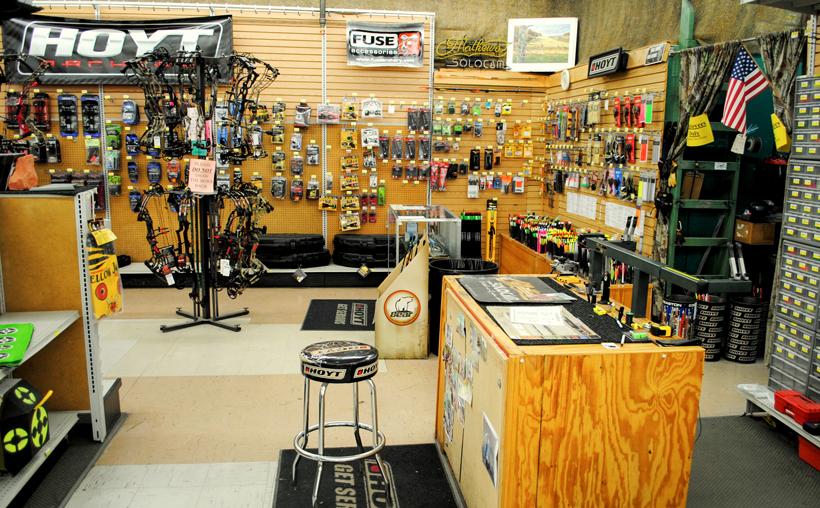
Photo credit: Trail Kreitzer
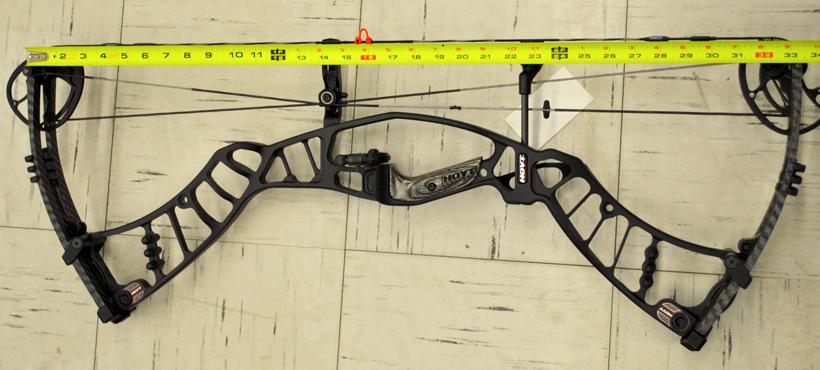
Photo credit: Trail Kreitzer
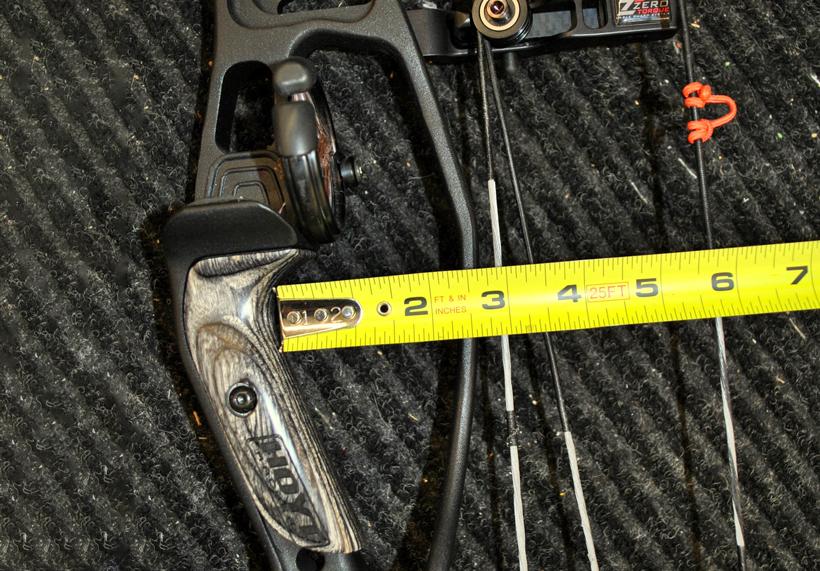
Photo credit: Trail Kreitzer
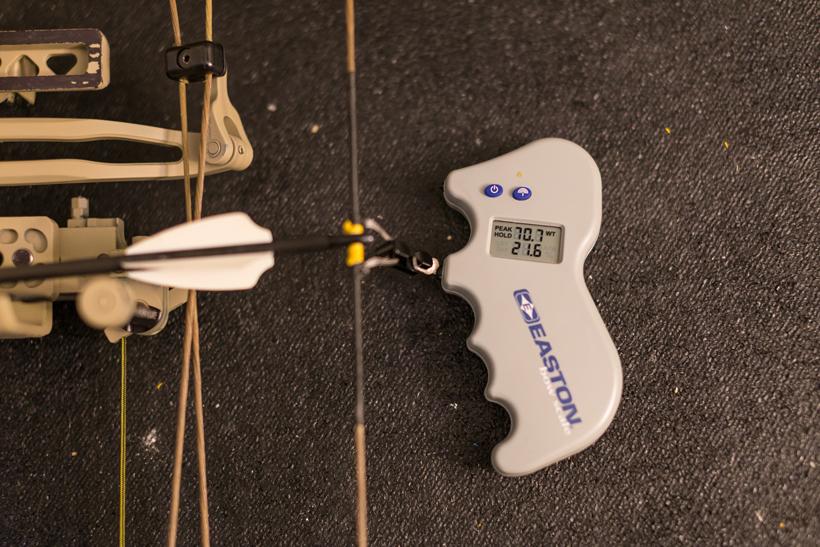
Photo credit: goHUNT.com
| Small child |
|---|---|
Body weight | 50 to 70 lbs. |
Recommended bow draw weight | 10 to 15 lbs. |
| Child |
Body weight | 70 to 100 lbs. |
Recommended bow draw weight | 15 to 25 lbs. |
| Most women& boys |
Body weight | 100 to 130 lbs. |
Recommended bow draw weight | 30 to 40 lbs. |
| Women above average strength& youth boys |
Body weight | 130 to 150 lbs. |
Recommended bow draw weight | 40 to 50 lbs. |
| Most men (target archery) |
Body weight | 150 to 180 lbs. |
Recommended bow draw weight | 50 to 60 lbs. |
| Most men (bowhunting or 3D) |
Body weight | 150 to 180 lbs. |
Recommended bow draw weight | 55 to 65 lbs. |
| Muscular young men& larger men |
Body weight | 180 or more lbs. |
Recommended bow draw weight | 60 to 70 + lbs. |
| Body weight | Recommended bow draw weight |
|---|---|---|
Small child | 50 to 70 lbs. | 10 to 15 lbs. |
Child | 70 to 100 lbs. | 15 to 25 lbs. |
Most women& boys | 100 to 130 lbs. | 30 to 40 lbs. |
Women above average strength& youth boys | 130 to 150 lbs. | 40 to 50 lbs. |
Most men (target archery) | 150 to 180 lbs. | 50 to 60 lbs. |
Most men (bowhunting or 3D) | 150 to 180 lbs. | 55 to 65 lbs. |
Muscular young men& larger men | 180 or more lbs. | 60 to 70 + lbs. |
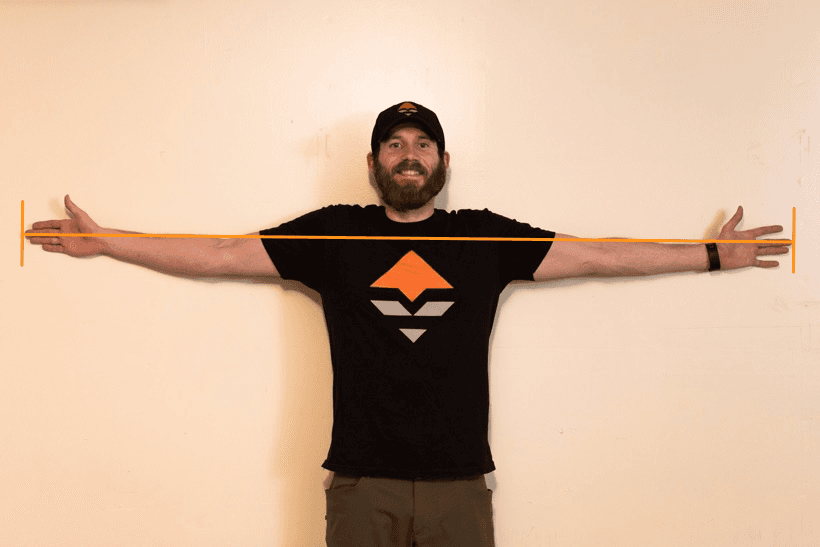
Photo credit: goHUNT.com

Photo credit: goHUNT.com

Photo credit: goHUNT.com
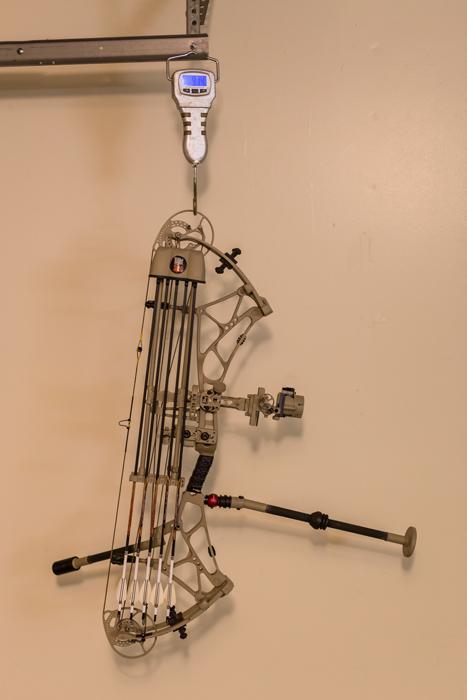
Weighing hunting bow with all accessories. Photo credit: goHUNT.com
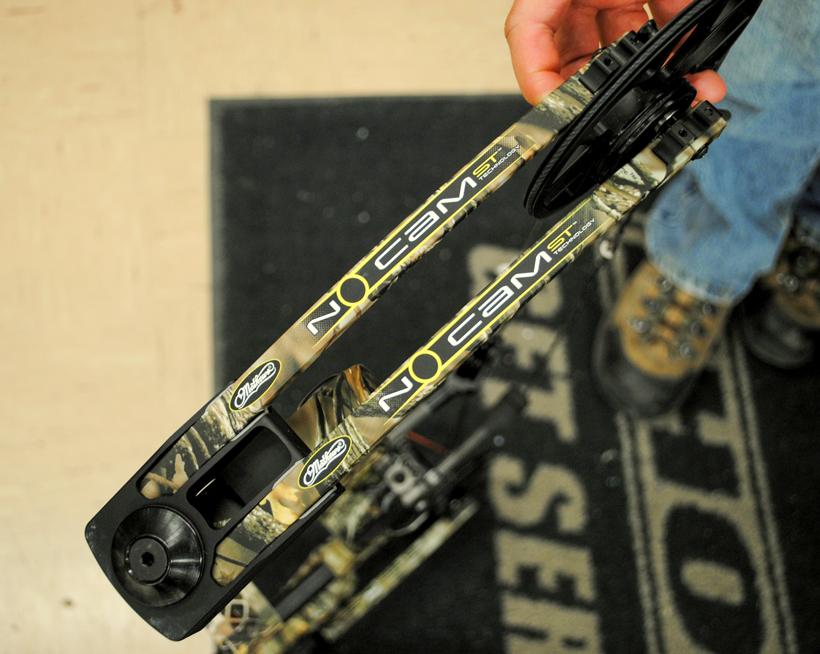
Photo credit: Trail Kreitzer
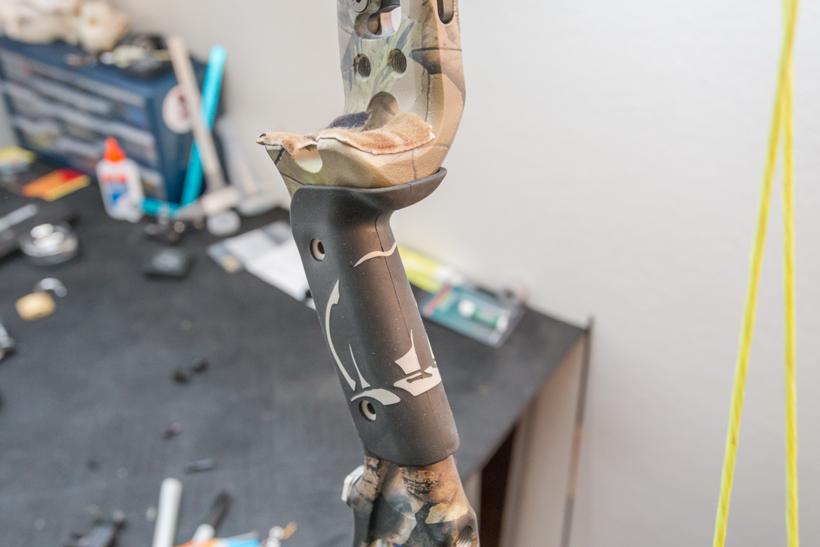
Photo credit: goHUNT.com
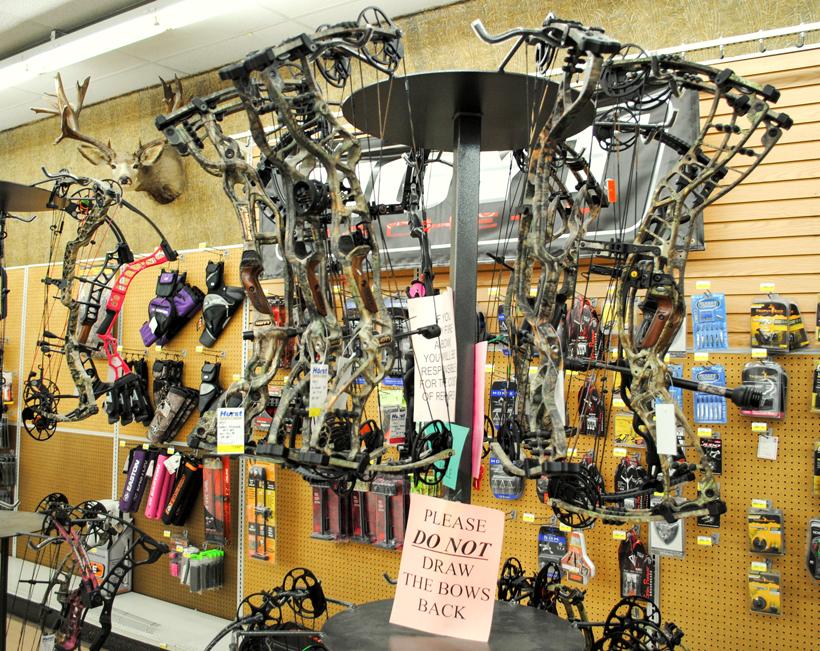
Photo credit: Trail Kreitzer
Brand | Bear Arena 30 |
|---|---|
ATA | 30.5" |
Braceheight | 6.5" |
Draw weight(lbs.) | 50/60/70 |
Let-off | 75% |
IBO-Speed(fps) | 345 |
Bowweight(lbs.) | 3.8 |
Brand | Bear Arena 34 |
ATA | 34.5" |
Braceheight | 6.5" |
Draw weight(lbs.) | 50/60/70 |
Let-off | 75% |
IBO-Speed(fps) | 340 |
Bowweight(lbs.) | 4.0 |
Brand | Bear Agenda 6 |
ATA | 32" |
Braceheight | 6" |
Draw weight(lbs.) | 50/60/70 |
Let-off | 75% |
IBO-Speed(fps) | 350 |
Bowweight(lbs.) | 3.9 |
Brand | Bowtech Prodigy |
ATA | 32" |
Braceheight | 7" |
Draw weight(lbs.) | 50/60/70 |
Let-off | 80% |
IBO-Speed(fps) | 343 |
Bowweight(lbs.) | 4.2 |
Brand | Bowtech Boss |
ATA | 36" |
Braceheight | 7" |
Draw weight(lbs.) | 50/60/70 |
Let-off | 80% |
IBO-Speed(fps) | 333 |
Bowweight(lbs.) | 4.6 |
Brand | Bowtech RPM 360 |
ATA | 31" |
Braceheight | 6" |
Draw weight(lbs.) | 50/60/70 |
Let-off | 80% |
IBO-Speed(fps) | 360 |
Bowweight(lbs.) | 4.4 |
Brand | Bowtech Carbon Icon |
ATA | 31" |
Braceheight | 7" |
Draw weight(lbs.) | 50/60/70 |
Let-off | 80% |
IBO-Speed(fps) | 335 |
Bowweight(lbs.) | 3.2 |
Brand | Elite Synergy |
ATA | 33.5" |
Braceheight | 7 3/8" |
Draw weight(lbs.) | 60/65/70/80 |
Let-off | ** |
IBO-Speed(fps) | 323-325 |
Bowweight(lbs.) | 4.4 |
Brand | Elite Energy 32 |
ATA | 31.75" |
Braceheight | 7" |
Draw weight(lbs.) | 50/60/65/70/80 |
Let-off | ** |
IBO-Speed(fps) | 332-335 |
Bowweight(lbs.) | 4.3 |
Brand | Elite Energy 35 |
ATA | 34.75" |
Braceheight | 7" |
Draw weight(lbs.) | 50/60/65/70/80 |
Let-off | ** |
IBO-Speed(fps) | 327-340 |
Bowweight(lbs.) | 4.5 |
Brand | Elite Victory |
ATA | 39" |
Braceheight | 7" |
Draw weight(lbs.) | 50/60/65/70 |
Let-off | ** |
IBO-Speed(fps) | 322-325 |
Bowweight(lbs.) | 4.5 |
Brand | Hoyt Carbon SpyderZT 30 |
ATA | 30" |
Braceheight | 6.75" |
Draw weight(lbs.) | 40/50/6065/70/80 |
Let-off | 75% |
IBO-Speed(fps) | 332 |
Bowweight(lbs.) | 3.6 |
Brand | Hoyt Carbon SpyderZT 34 |
ATA | 34" |
Braceheight | 6.75" |
Draw weight(lbs.) | 40/50/6065/70/80 |
Let-off | 75% |
IBO-Speed(fps) | 330 |
Bowweight(lbs.) | 3.8 |
Brand | Hoyt Carbon SpyderZT Turbo |
ATA | 33" |
Braceheight | 6" |
Draw weight(lbs.) | 40/50/6065/70/80 |
Let-off | 75% |
IBO-Speed(fps) | 350 |
Bowweight(lbs.) | 3.8 |
Brand | Hoyt Nitrum 30 |
ATA | 30" |
Braceheight | 6.75" |
Draw weight(lbs.) | 40/50/6065/70/80 |
Let-off | 75% |
IBO-Speed(fps) | 332 |
Bowweight(lbs.) | 3.9 |
Brand | Hoyt Nitrum 34 |
ATA | 34" |
Braceheight | 6.75" |
Draw weight(lbs.) | 40/50/6065/70/80 |
Let-off | 75% |
IBO-Speed(fps) | 330 |
Bowweight(lbs.) | 4.2 |
Brand | Hoyt Nitrum Turbo |
ATA | 33" |
Braceheight | 6" |
Draw weight(lbs.) | 40/50/6065/70/80 |
Let-off | 75% |
IBO-Speed(fps) | 350 |
Bowweight(lbs.) | 4.2 |
Brand | Mathews No Cam HTR |
ATA | 32" |
Braceheight | 6 5/8" |
Draw weight(lbs.) | 50/60/70 |
Let-off | 65%/75%85% |
IBO-Speed(fps) | 330 |
Bowweight(lbs.) | 4.3 |
Brand | Mathews Wake |
ATA | 35" |
Braceheight | 5" |
Draw weight(lbs.) | 40/50/6070/80 |
Let-off | 75%/85% |
IBO-Speed(fps) | 352 |
Bowweight(lbs.) | 5.38 |
Brand | Mathews Chill X |
ATA | 35" |
Braceheight | 7" |
Draw weight(lbs.) | 50/60/70 |
Let-off | 75%/85% |
IBO-Speed(fps) | 336 |
Bowweight(lbs.) | 4.5 |
Brand | Mathews Chill R |
ATA | 33" |
Braceheight | 6 1/8" |
Draw weight(lbs.) | 50/60/70 |
Let-off | 80% |
IBO-Speed(fps) | 342 |
Bowweight(lbs.) | 3.95 |
Brand | G5 Prime Rival |
ATA | 35" |
Braceheight | 6.25" |
Draw weight(lbs.) | 40/50/60/70 |
Let-off | up to 85% |
IBO-Speed(fps) | 340 |
Bowweight(lbs.) | 4.3 |
Brand | G5 Prime Ion |
ATA | 31" |
Braceheight | 7.25" |
Draw weight(lbs.) | 40/50/60/70 |
Let-off | up to 85% |
IBO-Speed(fps) | 330 |
Bowweight(lbs.) | 3.9 |
Brand | G5 Prime Alloy |
ATA | 33.25" |
Braceheight | 6.75" |
Draw weight(lbs.) | 50/60/70 |
Let-off | up to 85% |
IBO-Speed(fps) | 335 |
Bowweight(lbs.) | 4.2 |
Brand | PSE Decree HD |
ATA | 35" |
Braceheight | 6.5" |
Draw weight(lbs.) | 50/60/70 |
Let-off | 80% |
IBO-Speed(fps) | 334 |
Bowweight(lbs.) | 4.2 |
Brand | PSE Full Throttle |
ATA | 33.25" |
Braceheight | 5.25" |
Draw weight(lbs.) | 50/60/70 |
Let-off | 70% |
IBO-Speed(fps) | 362 |
Bowweight(lbs.) | 4.1 |
Brand | PSE Dream SeasonDecree |
ATA | 31 3/8" |
Braceheight | 6" |
Draw weight(lbs.) | 50/60/65/70 |
Let-off | 75% |
IBO-Speed(fps) | 347 |
Bowweight(lbs.) | 3.7 |
Brand | PSE Freak SP |
ATA | 38" |
Braceheight | 7 1/8" |
Draw weight(lbs.) | 60/70/80 |
Let-off | 75% |
IBO-Speed(fps) | 346 @33" DL |
Bowweight(lbs.) | 4.3 |
Brand | ATA | Braceheight | Draw weight(lbs.) | Let-off | IBO-Speed(fps) | Bowweight(lbs.) |
|---|---|---|---|---|---|---|
Bear Arena 30 | 30.5" | 6.5" | 50/60/70 | 75% | 345 | 3.8 |
Bear Arena 34 | 34.5" | 6.5" | 50/60/70 | 75% | 340 | 4.0 |
Bear Agenda 6 | 32" | 6" | 50/60/70 | 75% | 350 | 3.9 |
Bowtech Prodigy | 32" | 7" | 50/60/70 | 80% | 343 | 4.2 |
Bowtech Boss | 36" | 7" | 50/60/70 | 80% | 333 | 4.6 |
Bowtech RPM 360 | 31" | 6" | 50/60/70 | 80% | 360 | 4.4 |
Bowtech Carbon Icon | 31" | 7" | 50/60/70 | 80% | 335 | 3.2 |
Elite Synergy | 33.5" | 7 3/8" | 60/65/70/80 | ** | 323-325 | 4.4 |
Elite Energy 32 | 31.75" | 7" | 50/60/65/70/80 | ** | 332-335 | 4.3 |
Elite Energy 35 | 34.75" | 7" | 50/60/65/70/80 | ** | 327-340 | 4.5 |
Elite Victory | 39" | 7" | 50/60/65/70 | ** | 322-325 | 4.5 |
Hoyt Carbon SpyderZT 30 | 30" | 6.75" | 40/50/6065/70/80 | 75% | 332 | 3.6 |
Hoyt Carbon SpyderZT 34 | 34" | 6.75" | 40/50/6065/70/80 | 75% | 330 | 3.8 |
Hoyt Carbon SpyderZT Turbo | 33" | 6" | 40/50/6065/70/80 | 75% | 350 | 3.8 |
Hoyt Nitrum 30 | 30" | 6.75" | 40/50/6065/70/80 | 75% | 332 | 3.9 |
Hoyt Nitrum 34 | 34" | 6.75" | 40/50/6065/70/80 | 75% | 330 | 4.2 |
Hoyt Nitrum Turbo | 33" | 6" | 40/50/6065/70/80 | 75% | 350 | 4.2 |
Mathews No Cam HTR | 32" | 6 5/8" | 50/60/70 | 65%/75%85% | 330 | 4.3 |
Mathews Wake | 35" | 5" | 40/50/6070/80 | 75%/85% | 352 | 5.38 |
Mathews Chill X | 35" | 7" | 50/60/70 | 75%/85% | 336 | 4.5 |
Mathews Chill R | 33" | 6 1/8" | 50/60/70 | 80% | 342 | 3.95 |
G5 Prime Rival | 35" | 6.25" | 40/50/60/70 | up to 85% | 340 | 4.3 |
G5 Prime Ion | 31" | 7.25" | 40/50/60/70 | up to 85% | 330 | 3.9 |
G5 Prime Alloy | 33.25" | 6.75" | 50/60/70 | up to 85% | 335 | 4.2 |
PSE Decree HD | 35" | 6.5" | 50/60/70 | 80% | 334 | 4.2 |
PSE Full Throttle | 33.25" | 5.25" | 50/60/70 | 70% | 362 | 4.1 |
PSE Dream SeasonDecree | 31 3/8" | 6" | 50/60/65/70 | 75% | 347 | 3.7 |
PSE Freak SP | 38" | 7 1/8" | 60/70/80 | 75% | 346 @33" DL | 4.3 |
Brand | Mathews Jewel |
|---|---|
ATA | 28" |
Braceheight | 6 3/8" |
Draw weight(lbs.) | 40/45/5055/60 |
Let-off | 80% |
IBO-Speed(fps) | 325 |
Bowweight(lbs.) | 3.6 |
Brand | Mathews Chill SDX |
ATA | 30.5" |
Braceheight | 6" |
Draw weight(lbs.) | 40/50/60/70 |
Let-off | 80% |
IBO-Speed(fps) | 330 |
Bowweight(lbs.) | 3.84 |
Brand | Bowtech Eva ShockeyCarbon |
ATA | 31.5" |
Braceheight | 6.25" |
Draw weight(lbs.) | 40/50/60 |
Let-off | 80% |
IBO-Speed(fps) | 332 |
Bowweight(lbs.) | 3.3 |
Brand | Elite Spirit |
ATA | 31 7/8" |
Braceheight | 7" |
Draw weight(lbs.) | 40/45/50/60 |
Let-off | ** |
IBO-Speed(fps) | 304-307 |
Bowweight(lbs.) | 3.9 |
Brand | PSE PremonitionStiletto |
ATA | 30 5/8" |
Braceheight | 6.25" |
Draw weight(lbs.) | 40/50 |
Let-off | 80% |
IBO-Speed(fps) | 337 |
Bowweight(lbs.) | 3.9 |
Brand | Bear Rumor |
ATA | 30.25" |
Braceheight | 6.5" |
Draw weight(lbs.) | 40/50/60 |
Let-off | 75% |
IBO-Speed(fps) | 300 |
Bowweight(lbs.) | 3.6 |
Brand | ATA | Braceheight | Draw weight(lbs.) | Let-off | IBO-Speed(fps) | Bowweight(lbs.) |
|---|---|---|---|---|---|---|
Mathews Jewel | 28" | 6 3/8" | 40/45/5055/60 | 80% | 325 | 3.6 |
Mathews Chill SDX | 30.5" | 6" | 40/50/60/70 | 80% | 330 | 3.84 |
Bowtech Eva ShockeyCarbon | 31.5" | 6.25" | 40/50/60 | 80% | 332 | 3.3 |
Elite Spirit | 31 7/8" | 7" | 40/45/50/60 | ** | 304-307 | 3.9 |
PSE PremonitionStiletto | 30 5/8" | 6.25" | 40/50 | 80% | 337 | 3.9 |
Bear Rumor | 30.25" | 6.5" | 40/50/60 | 75% | 300 | 3.6 |
Archery is growing in popularity and, from a hunting perspective, it makes good sense. Technology within the archery industry continues to improve and bows are getting faster, more efficient, accurate and easier to shoot. In addition to the improvements in gear, a quick review of the drawing odds of any western state will give you an idea of what permits are ultimately easiest to draw and, with only a handful of exceptions, archery hunting opportunities are definitely easier to come by.
With improving technology and better drawing odds, it is a great time to consider making the leap into bowhunting. Purchasing a new bow may appear to be a complex process especially with so options available, but it is not as complicated as it seems. If you are thinking about getting into bowhunting, this article will provide a description of common compound bow terminology and their associated meanings so that when you walk into a pro shop you can make an educated selection based on your needs.
With the release of any new bow the manufacturer will list its specifications, which include: axle to axle, brace height, draw weight, let-off, IBO rating and physical bow weight. These specifications or characteristics need to be understood and evaluated to help you make the best choice.
The axle to axle length is the measurement on a compound bow from the center of the top cam axle to the center of the bottom cam axle. A longer ATA length is generally considered to be more forgiving and accurate. If you surveyed top tier professional archers, almost all are shooting a bow that is at least 35 inches ATA or longer.
If you plan to use the bow for hunting, you need to consider the practicality of hunting with a longer bow. A long ATA bow may be cumbersome if you are hunting from a treestand or a ground blind where space is limited. However, if you are hunting more open terrain and using spot and stalk methods, a longer ATA bow may be just the ticket for extending your range. You should also consider your draw length, how it relates to ATA and the associated string angle and distance of the peep site to your eye. For example, I have a 30” draw length. A short ATA bow of 30” to 32” will have a very acute string angle at full draw, which means that the peep site and string will sit out away from my eye and tip of my nose by quite a bit. Is this a bad thing? For most it is: a repeatable anchor point is critical to shooting consistently and being able to utilize the tip of your nose as an additional point of reference is of great value. In addition, it can be more difficult to see through a peep site if it is too far away from your eye.
1. Longer ATA bows are more forgiving.2. Taller archers with longer draw lengths (29” inches or more) should likely consider longer ATA bows (34” or more).3. Primary hunting method should be considered when choosing a bow. Shorter ATA bows are more suitable for closer shots from confined spaces. Longer ATA bows are more suitable for longer shots as well as spot and stalk style hunting.
A bow’s brace height is the distance from the bowstring to the pivot point of the bow’s grip at rest. Some also define it as the distance of the bowstring to the center of the berger hole, which is likely the same. Either way, brace height is important because it impacts a bow’s speed and accuracy/forgiveness. There are some pros and cons to consider about brace height. The shorter the brace height, the longer the arrow will remain on the string which produces a greater power stroke and faster arrows downrange. On the flip side, the longer the brace height the less time your arrow is on the string and the less time your form has to be perfectly maintained in order to hit where you are aiming. A longer brace height is more forgiving, but you may also sacrifice some speed. A shorter brace height produces faster arrows, but you will sacrifice some forgiveness. Again, primary hunting methods need to be considered. If most of your shots are taken from closer ranges on game that are prone to jump a string then a short brace height speed bow might be a better choice, but if you are looking to extend your range then perhaps look for longer brace height bows.
1. You can find a variety of hunting bows that differ in brace height, but generally they fall into the 5 to 7 inch range.2. You will have to decide what is important to you and your hunting style. Of course, in the right hands, even speed bows can be shot accurately.3. My personal recommendation is to be realistic in evaluating your abilities and needs before choosing accordingly. For me, as a Western spot and stalk big game hunter who practices four to five times a week, forgiveness and accuracy are more important than speed so I inevitably end up buying bows that have a minimum 7” brace height.
Draw weight is the peak weight required to pull the string back into full draw. A compound bow will increase to the peak weight and then drop in weight to the holding weight. The decrease in holding weight is commonly referred to as the bow’s let-off. The percent of let-off is typically 65% to 85% depending on the bow, this gives you an idea of how much weight you will actually be holding at full draw. For example, a 70 lb. bow with 85% let-off means you will reach a peak weight of 70 lb. before rolling over into a holding weight of about 10.5 lb.
There are some considerations to think about when deciding on let-off: What is your highest priority? Speed? Accuracy? Comfort and ease of holding the bow at full draw for a long time? You will typically lose some arrow speed with higher let-off, but high let-off may be great in hunting situations where you might be holding draw weight for longer periods of time. Some, including myself, do not like the feel of an 85% let-off cam and I tend to shoot better with a bit more holding weight. Luckily, the let-off on most current compound bows can be manipulated by adjusting draw stops or changing the cam modules which will help you find what works best for you.
Everyone differs in size and strength, but listed below is a general guideline:
1. In my experience there is no reason to purchase and hunt with a bow that has more draw weight than you can accurately hold and shoot every single time you pull it back — and I do not mean only at the local range. Drawing a bow back at the range while shooting with your buddies on a July evening is quite a bit different then drawing back on a brisk September morning with a 200” velvet muley feeding by at 50 yards.2. Every modern compound bow at any draw length with a minimum of a 40 lb. draw weight can be effective.3. A well placed arrow is a deadly arrow. Put your pride aside and shoot a reasonable draw weight for your individual strength and ability.
The proper draw length is the most important factor in accurately shooting a bow and arrow. To measure your draw length, stand with your back against a wall stretching your arms out so your body looks like a “T.” Measure the distance from the end of your middle finger to the end of your other middle finger, which is the length of both arms, hands and chest. This measurement, minus 15 then divided by 2, is your approximate draw length. For example, the person above has a wingspan of 78 inches which equals a 31.5" draw length. Make sure to review GOHUNT.com’s article on proper shooting form to help guide your shooting.
What is IBO? IBO (International Bowhunting Organization) is a standardized means of rating and comparing the speed of bows. The IBO, or speed, is identified by shooting an exact 350 grain finished arrow from a bow at precisely a 70 lb. draw weight and a 30” draw length. Everyone wants a faster bow. More speed equals flatter trajectory and more kinetic energy, but it is important to understand where speed comes from. Speed primarily comes from a few places: increased draw weight, increased draw length, decreasing brace height (longer power stroke) and more aggressive draw force curves and cam designs. As previously stated, correct draw length is critical to accuracy and it is never recommended to shoot a longer draw length just to pick up a few feet per second (fps). Draw weight can help you gain a few fps, but again in my opinion more speed is not worth sacrificing shootability. A short brace height bow is not necessarily a bad thing, but you should evaluate your hunting style and abilities before making a selection. Most current bows fall into an IBO of 320 to about 350 fps. In my opinion, a bow that is comfortable to draw, forgiving, accurate and has an IBO of 320 or slightly better is a deadly weapon.
The Hoyt Carbon Matrix broke onto the scene in 2010 claiming to be lighter and stronger than comparable aluminum riser bows. Since then, overall bow weight has been a part of the discussion where perhaps it was not so much of a focus before. The primary benefit of a lightweight bow is that it is easier to pack, especially if you are a diehard backcountry hunter. However, a lightweight bow might not hold and aim as steady as a bow with more mass. Drawing from competitive archery, you will see that top shooters are adding quite a bit of weight on the end with the use of long stabilizers to steady their aim.
Weighing hunting bow with all accessories. Photo credit: GOHUNT.com
Consider this: in most cases it takes maximum effort to actually get within range of a game animal with a bow and arrow in hand. For me, those opportunities are so valuable that my priority is not necessarily the weight of my bow, but how confident I am that I can make the shot. So the take home message I would offer is weigh your priorities and shoot the bow that you are most confident in even if it weighs a bit more.
The phrase “dead in the hand” is commonly used when talking about how a bow feels on the shot. Most like the feeling of a bow that fires an arrow with very little feedback in the way of vibration in the hand or noise. Every current bow on the market has specific designs built within the bow to make it smoother and quieter to shoot like parallel limbs or built in rubber dampeners. While the benefits of a quiet bow are certainly easy to understand, I would argue that a bit of feedback in the hand is not necessarily a deal breaker. I actually like a bit of feedback and again, for me, my priority is a bow that holds and balances well and is a tack driver.
Draw cycle is another key issue that should be considered when buying a new bow. Draw cycles vary widely. Some build quickly near the front of the cycle and dive into the valley at full draw. Others are steadier throughout the draw and seem to slip easily into full draw. Draw force curves are a very personal choice, but I will suggest that you evaluate a bow with the mindset that in a hunting situation you will have to draw with nerves firing on all cylinders. Consider having to draw and perhaps even hold the bow at full draw for awhile so that buck or bull can clear the last tree. If you cannot easily do it in the shop, then chances are in hunting situations it will be nearly impossible.
The bow's grip and how it feels in your hand is particularly important when shooting and buying a new bow. Please refer to the GOHUNT's article on proper bow grip. If you like a bow, but hate the grip, a new aftermarket one can likely be purchased or made to fit your new bow. A prime example, I like the Mathews Chill X, it draws smoothly, holds like a rock, and has great specs but I absolutely hate the rubber grip with the raised center line. It feels tacky in my hand and I feels like the raised grip rolls in my hand on the shot. If I were to buy one I would highly recommend getting a High Demand Archery Grip or something comparable. Be aware of the grip when buying a new bow. There are some great bows with lousy factory grips in my opinion.
The cost of a new bow can be significant. The flagship models are going to cost nearly $1,000 for a bare bow. Just like anything, the higher end models are built of better materials from better processes which give them more strength, speed and, perhaps, other small benefits. There are some great mid and lower end models though and they should be evaluated in the same manner.
Finally, the best way to figure out what bow is right for you is to take all the information from above and go to your local pro shops and shoot the ones that may suit your needs. When I say shoot them, I mean shoot them a lot. Take your first impressions and write them down and return another day to shoot and compare your evaluations again. Selecting the right bow is important. Like me, it may become something that you cannot get enough of since there is nothing else like it.
Below is a table summarizing some information on the new 2015 line-up on the major bow manufacturers.
** Elite Archery does not publish let-off but indicates a "huge dwell zone." Independent tests suggest the let-off may be as high as 90% on their current model bows.